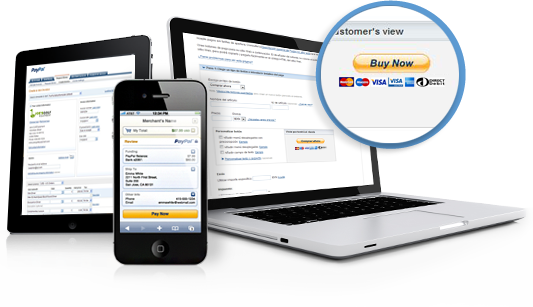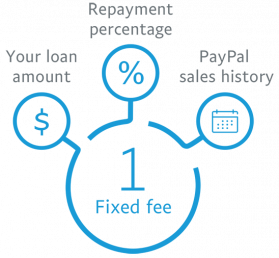There is no doubt that small fintech firms and large tech companies are impacting the way consumers do their banking. From digital savings solutions to P2P payments and unique lending alternatives, traditional banks are under attack from all directions in almost every product and service category.
One of the more familiar players is PayPal, which has expanded well beyond being just a payment solution, impacting both consumer and business account dynamics. So much so, that I realized recently that I am actually relying on PayPal for more of my business needs than I use my traditional bank. And I don’t think I am alone.
Advantages of PayPal for Small Businesses
I found many advantages to using PayPal for my small business compared to my traditional bank.
- Setting up a PayPal Account: This was unbelievably simple. I didn’t need to go to a branch (there are none) and the process was a great lesson for traditional banks in account opening and onboarding.
- No Reserve: When I started the Digital Banking Report, and wanted to accept credit cards, I set up a merchant account that held back a percentage of my receipts to cover any charge-backs. Over 4 years, Authorize.net held back over $40,000 despite the account never having a disputed payment or credit card refund. PayPal has no reserve.
- Brand Familiarity: PayPal’s strong brand eliminates any concern when a potential customer wants to make a payment.This has all but eliminated check and American Express payments which were a nuisance.
- Ease of Use by Businesses: PayPal was built for the digital age. Both the online and mobile app are as easy and self explanatory as any banking account. The mobile app has everything where you would think it should be and the design is close to flawless.
- Ease of Use by Customers: Potential customers do not need a PayPal account to use the PayPal payment service. Almost everyone has made a payment using PayPal before, eliminating the need to educate on the process.
- Invoicing: I can invoice directly from my PayPal account using the PayPal invoicing tools. I have easy access to my customers’ information including phone, email and text. I can easily view transaction details and search for transactions.
- Integration: Integrating the PayPal payment service within our digital subscription platform was easy. In fact, most eCommerce platforms have an easy plug-in for PayPal invoicing and payments.
- Fees: PayPal’s fees are less than many merchant accounts (2.9% + $0.30 USD for debit and credit card purchases). This is a minimal cost compared to the reserve I was subjected to over and above the transaction fees I was paying.
- Mobile Deposits: I don’t receive a lot of checks a month for subscriptions, but my current bank has a monthly limit of only $5,000 without regard for tenure of account or credit rating. With PayPal, I can cash multiple checks totaling up to $5,000 in value per day and up to $10,000 in value per month. There is a fee for this service if I wanted the money available immediately.
- Savings Support: I can use Acorns to automatically transfer funds to an investment account. PayPal does not charge for this service.
- Venmo Support: If I received funds (or wanted to send funds) using Venmo, PayPal supports this transaction on a mobile device.
- Payments: Every one of the payments I make for my business can be handled through PayPal. I can transfer funds directly to friends, family and my solution providers. If I buy any office supplies, I do this using PayPal.
- Debit Card and ATM Access: I never need cash for my business, but if I did, I could use the PayPal debit MasterCard at an ATM. I could also use the debit card for purchases, bill payments, etc. but I never need to.
- Cash-Back Rewards: Transactions that are eligible for cash back include credit transactions which I sign for and which are processed via MasterCard.
- Accounting Software Integration: PayPal seamlessly integrates with my accounting software, making monthly record keeping easy.

Industry Cloud for Banking from PwC
PwC’s Industry Cloud for Banking applies our deep industry knowledge to your specific business needs

Why Industry Cloud for Banking?
PwC’s Industry Cloud for Banking helps deliver personalized products and services that today’s customers expect.
Disadvantages of PayPal for Small Businesses
There are a few disadvantages to using PayPal for all of my banking services.
- Fees for Chargebacks: If there was a chargeback for a purchase, the fees from PayPal are significant and could become an issue regarding account limits or suspension. Since all of my clients are banks or known solution providers, this has not been an issue.
- Potential Account Suspension: There are a number of comment strings on the Internet regarding suspended accounts. This is usually in connection with potential fraudulent activity. This is not an issue with my business model.
- Availability of Funds: It can sometimes take a few days for withdrawn funds to clear in my bank account. For my business, this is not an issue.
- FDIC Insurance: Since PayPal is not a bank there is no insurance on deposited funds. While PayPal has just announced partnerships with smaller financial institutions that may be able to provide this protection, it is currently only being tested (mostly with underbanked and unbanked consumers).
- No Checks: Being a digital product by nature, PayPal does not offer checks with their service. There has not been one time I wished I could have written a check. (Note: I do write checks for tax payments from my traditional bank account)
Moving from My Bank to PayPal
The decision to use PayPal to process my payments and to make payments to others was not a conscious one initially. In fact, it all came down to simplicity. Going to a mail facility to collect checks several times a week and visiting my branch was not a good use of my time.
When we updated our Digital Banking Report website and designed the payment process around using PayPal, the use of checks and wire transfers for payments dropped to near zero. Since I do most of my shopping for business supplies on Amazon, it was natural to use PayPal for these purchases. I also realized that it was easy to pay for travel and other expenses this way as well.
Over time, I realized that almost all transactions came through PayPal. Today, I monitor my PayPal account regularly and transfer funds in excess of $10,000 to my traditional bank to cover taxes and to take advantage of FDIC insurance coverage. In other words, my traditional bank is only used as a ‘holding tank’ for funds.
PayPal Working Capital
Beyond payment and deposit services, PayPal also offers small business lending services. Like everything else at PayPal, PayPal Working Capital is built for digital, with access as easy as the payment app. If I wanted a loan, I would simply select the amount I’d like to receive (up to 30% of my PayPal sales over the past 12 months) up to a maximum of $97,000. I can select my repayment terms and the fixed fee for the loan (they do not charge an interest rate like traditional lenders.
My repayments would be taken from my future sales until my loan plus the fixed fee are paid off. I could also make one-time repayment without penalty.
To qualify, my business would have needed to have an account with PayPal for at least 3 months and processed at least $15,000 in sales with my account remaining in good standing. Obviously, this criteria (and the borrowing process) is much easier than my traditional bank.
Based on business standing, I have received several calls and invitations from PayPal to apply for a loan. All I have received from my traditional business bank are credit card applications (non pre-approved). In fact, PayPal also has a Business Loans product that helps small business owners get larger than $97k loans. This came from PayPal’s acquisition of Swift Financial.

PayPal Meets Needs of the Underbanked
With a relatively strong foothold in business payment processing and related services, PayPal isn’t stopping there. PayPal recently announced that it will introduce new products targeting the unbanked with financial services that are less expensive and easier to use.
The digital giant is offering debit cards that can be used to withdraw from ATMs, the ability to instantly deposit a check to an account by taking a photo, and the option to have direct deposit of paychecks to the prepaid debit account, among other products. The PayPal Cash Mastercard will have no sign up fee, no monthly fee, and no minimum balance requirement.
To do all this, PayPal established a number of partnerships. It has has teamed up with a handful of small banks that will allow pass-through FDIC insurance. In additional, debit cards will come from a bank in Delaware, the check deposit feature through a bank in Georgia, and banks in Utah will make loans to consumers and small businesses.
PayPal’s Chief Operating Officer Bill Ready stated in an interview, “In the U.S. alone, there are more than 30 million people considered financially under-served. They spend about 9.5% of their income on interest fees for alternative financial services.”
While it may appear that PayPal wants to become a retail and small business bank, PayPal says that is not in their plans.”We are not a bank and we have no aspirations to become a bank. We’re not looking to move into banking at all,” Ready says. “What we are doing is democratizing access to financial services.”
PayPal is not just looking at underserved consumers in the U.S. There was also a deal announced between PayPal and M-Pesa, a mobile money service based in Kenya. The deal will allow M-Pesa users to link their accounts to PayPal in order to buy goods and services outside of Kenya more easily.

Navigating the Role of AI in Financial Institutions
83% of FI leaders agree investing in AI is essential for 2024 but how you leverage AI is instrumental in success and meeting customer expectations.
Read More about Navigating the Role of AI in Financial Institutions

Are You Ready for a Digital Transformation?
Unlock the potential of your financial institution's digital future with Arriba Advisors. Chart a course for growth, value and superior customer experiences.
Is PayPal the Bank of the Future?
With almost 20 million active merchant accounts, PayPal allows consumers and business owners to seamlessly make purchases and pay vendors. As more services are added, the need to have a single traditional business (or consumer) relationship decreases. That’s why some small businesses (like my own) use PayPal for virtually all of their banking needs.
But this functionality is not only available with PayPal. Amazon, Facebook and Google are offering services that used to only be available at the corner branch bank. All of these services are being delivered digitally, with the advantages you would expect from these organizations. A business or consumer could easily tie together services from one or more of these firms and create a fully functioning (and easier to use) financial relationship.
Financial products and services are changing as are the definitions of these accounts. Does there really need to be a distinction between a checking, savings, investment, payment and loan account? Digital fintech firms are blurring the lines between these services, helping the small business or consumer more effectively manage their money.









